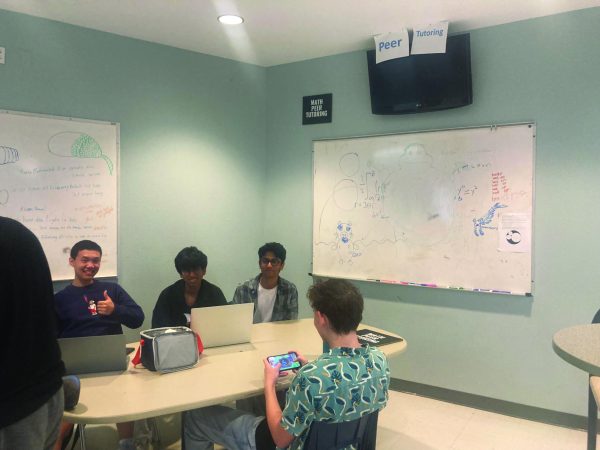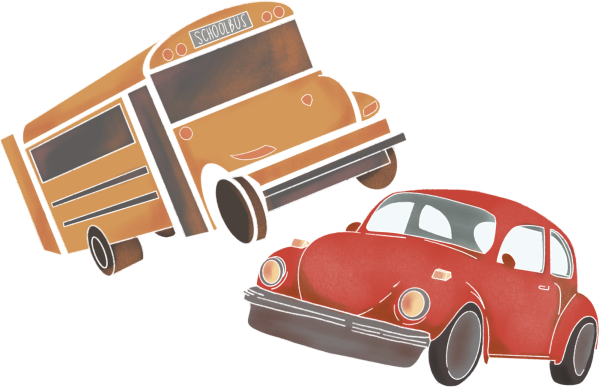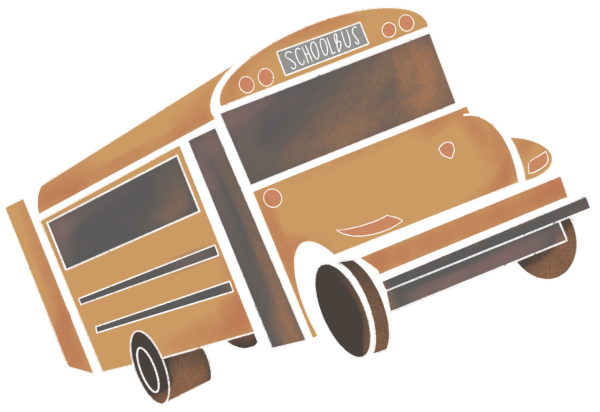IN-DEPTH: LASA Winter Celebrations and Cultural Holidays
December 17, 2021
From October through December, LASA students celebrate a variety of holidays as ways to connect with their family, religion, and culture. The following in depth focuses on Diwali, Día de los Muertos, and Hanukkah as three examples of student celebrations. However, those three holidays are by no means the only celebrations at LASA, and this is not meant to be an exhaustive list.
Diwali:
Diwali is a holiday of light celebrated in late October or early November by many people of Hindu, Buddhist, and Sikh faiths, according to junior Anokhi Sheth. Diwali is based on the lunar calendar, so the date of Diwali is slightly different each year on solar calendars. Sheth said Diwali was celebrated on Nov. 4 this year.
According to Sheth, the celebration of Diwali is historically based on the victory over the demon Naraka, but there are slight differences in the main characters of the stories depending on traditions. Junior Sathvik Chemudupati said in one version of Hindu mythology, Satyabhama and her husband Lord Krishna, an incarnation of Lord Vishnu, killed a demon. Sheth said there is another Hindu story called Ramayana where a different incarnation called Lord Rama killed the demon. Sheth said both versions depict a victorious leader of Ayodhya who conquered demons and darkness.
“Everyone in the kingdom loves him so much, and they were so scared that he was not going to come back alive,” Sheth said. “So when he comes back alive, they’re so happy. Diwali is them celebrating his return.”
To observe Diwali, Sheth said her family gathers with her relatives and other South Asian families during a time of celebration. In the evening, her family has sparklers and food to celebrate.
“A lot of times I’ll do fireworks with another Indian family,” Sheth said. “We’ll just eat together and then do fireworks afterwards. It’s just always been a fun tradition. Something that’s always meaningful.”
Chemudupati also gathers with family and friends to celebrate Diwali. He said his family makes sweets like laddu—sweetened rough dough balls—on occasion.
“Barfi, milk based sweet, and laddu are two Indian sweets that are made and exchanged on the occasion of Diwali,” Chemudupati said.
In addition to making sweets for Diwali, Chemudupati said his family lights small candles called diyas during the week of Diwali. Diyas are colorful candles to represent Rama’s victory over demons and darkness.
“A diya, oil lamp, represents the good that can eliminate evil, darkness,” Chemudupati said. “The flame from one oil lamp can be used to light other ones, symbolizing how this positive and enlightening force can be shared among all.”
Sheth said her family also uses colorful representations of light and celebration during the week of Diwali. Sheth’s aunt makes brightly colored, circular designs on her porch called rangoli.
“People will sometimes do designs on their porch called rangoli,” Sheth said. “It’s designs made with color powder. It’s really hard to do, but it’s really interesting to see them.”
Lastly, Chemudupati said his family prays to gods for good luck during the following year. Chemudupati and his relatives hope that by celebrating Diwali and lighting candles, they can prevent negative events and darkness in the future as well.
“Another symbol that is important for Diwali is an offering to Lakshmi, the goddess of wealth,” Chemudupati said. “People pray to the goddess, hoping for success and prosperity in their lives.”
Chemudupati and Sheth agreed that Diwali is a significant part of their culture and hope to continue observing the celebration. Sheth said Diwali is important to her as a way to connect with her community and family.
“I think it’s always just been a fun part of my life,” Sheth said. “It’s a time where I get to spend time with friends and family.”
Día de los Muertos:
Día de los Muertos is a holiday where families can honor their ancestors by making altars, or ofrendas, for late family members. According to junior Natalia Hernandez-Barcenas, Día de los Muertos is traditionally celebrated on Nov. 1 and 2.
Hernandez-Barcenas said her family makes an altar for her late grandfather with photos of him and some of his favorite foods. According to Hernandez-Barcenas, she puts food out so the spirit of her grandfather can enjoy a meal with her family.
“You’re gonna put up a picture of the deceased and then a lot of things that remind you of them,” Hernandez-Barcenas said, “and many people believe that their souls come back, so whatever they would like to take from the world of the living [goes] back with them.”
Specifically, Hernandez-Barcenas said she puts candles and cempoalxóchitles on her altar to guide the spirits of her ancestors to the ofrenda. Cempoalxóchitles are yellow flowers also known as Mexican marigolds.
“In the darkness, they say that the spirits can get lost,” Hernandez-Barcenas said, “so you want light there so the light will lead them to the ofrendas.”
Spanish teacher Luis Ramirez also makes altars for his late family members. Ramirez said he puts icons of Mexican culture, such as La Virgen de Guadalupe and La Catrina, on his altar. According to Ramirez, La Catrina is a skeleton figure depicted to be wearing marigolds and other festive clothing.
“You have the iconic image of La Catrina, which was something that was created in the 20th century by the artist José Guadalupe Posada,” Ramirez said. “La Catrina is supposed to represent la muerte, the image of death.”
Ramirez also said he knows families who make tamales for Día de los Muertos. Ramirez said not only are tamales one of the oldest foods within Mexican culture, but tamales are also significant for Día de los Muertos because the preparation of tamales helps families connect during the holiday.
“When you make tamales, it is a community that makes this food,” Ramirez said. “You have people preparing the corn, you’re preparing the masa, the feeling that goes into some models, and then you have your assembly line of people that are preparing the tamales. It is something that brings the family together, they’re able to bond, and they’re able to reflect and share memories.”
Ramirez said the holiday is particularly special for him as a way to grieve for his late relatives. When Ramirez’ grandmother passed away in 2019, he said collecting photos and thinking of his grandmother while making his altar helped him grieve.
“It really started to really be very special for me when she passed away in 2019, and I think people need to realize that Día de los Muertos can really help us in the grieving process,” Ramirez said. “When we’re grieving a relative, it just helps us to look back on those memories and also letting go. So it really helps in the grieving process. I think it’s very fascinating to acknowledge I lost somebody, but I’m celebrating their memory.”
Ramirez and Hernandez-Barcenas agreed that Día de los Muertos is an important holiday for them to celebrate their late family members and connect with living relatives. Hernandez-Barcenas said she really enjoys the celebration as a way to keep the memory of her ancestors alive.
“I think it’s a great way to keep the memory of them present within the family,” Hernandez-Barcenas said, “and just remember them and their legacy and just keep the family connected on that day.”
Food:
Food has been an integral part of many cultural celebrations from ancient versions of Halloween to present day Thanksgiving feasts. The long lasting factor that connects food and holidays is rooted in the cultural identity food provides.
Depending on how a food is prepared, where the ingredients come from, and who prepares it, a lot can be told about the cultural significance of the dish and the culture it stems from. When people started spreading across the world, they brought their cultures with them and consequently, interacted with different cultural groups. One of the ways that people remembered where they came from was through the food they prepared for special occasions and holidays.
Diwali is known as the festival of light and unlike some other South Asian festivals, there is no fasting during Diwali, but rather a celebration of sweets or “mithai.” Traditionally, the sweets and desserts are often made with a nut or vegetable base and condensed with sugar or milk, ingredients that are considered “pure” and able to be eaten by everyone. Barfi, is a fudge-like sweet that is made from powdered milk and sugar and is flavored with nuts or fruit. The dessert is used as an offering to the gods and is commonly included in worship during Diwali.
Another traditional snack is laddu, or laddoo, a round snack made of flour, ghee—clarified butter—and sugar. Laddu is commonly flavored with nuts or dried fruit. This sweet dessert is very popular during many other Indian festivals as well.
Día de los Muertos is also well known for its delectable sweets and grand feasts. It is common to see many altars decorated with an abundance of traditional food as well as the preferred foods of those who have passed. The offerings are meant to guide the souls of loved ones home, and allow them to take what they wish back to the land of the dead.
One of the most well known dishes made during the holiday is pan de muerto, translated to “bread of the dead.” The pastry is a sweet, round bread that symbolizes the circle of life. Traditionally, six sticks of dough are baked on top of the bread to represent the bones of the dead. Calaveras de Azúcar, are also placed on altars as offerings to the deceased. However, the sugar skulls are usually not eaten because of the intricate, hard decorations placed on them. The sugar skulls are decorated with bright colors and made out of pure sugar. Some people even add glitter and feathers to the sugar designs. Different sized skulls are meant to represent different ages or children that have passed.
During Hanukkah, families make a plethora of oil-based or fried foods to symbolize the small amount of oil that burned for the eight days of Hanukkah. A signature dish is latkes, also known as potato pancakes. The flat, round food is made from potatoes and is mixed with onions, eggs, flour, and various seasonings. Latkes are also served alongside a bowl of applesauce or sour cream for a flavorful topping.
A sweeter fried dish known as sufganiyot is a donut-like dessert filled with different types of jams. Matzo ball soup is also a common food served during Hanukkah. Matzo balls are made from matzo meal, eggs, water, and butter, and are traditionally eaten with a chicken broth.
Not only has food provided a connection to people’s ethnic identity, but it has also served as a common ground amongst people who use food as a means of communication and symbolism. Just like a home cooked meal can remind people of their childhood, special food made on holidays can remind others of their cultural roots.
Hanukkah
Hanukkah is one of the oldest holidays in the world, dating back to over 2,000 years ago, and families still find ways to celebrate and honor their ancestors. Known as the “Festival of Lights,” Jewish families around the world celebrate the holiday for eight days.
Typically observed in late November or December, Hanukkah is a Jewish holiday celebrating the rededication of the Temple in Jerusalem in the second century B.C.E. After a successful revolt against a tyrannical monarch, the Jewish community could find very little pure olive oil to light the menorah which they thought would only last one day. However, the oil lasted for eight days, and today, families will light a candle on their own menorah for each of the eight evenings of the holiday. In Hebrew, Hanukkah means “dedication,” and for junior Carter Matheny, the holiday is important in remembering the dedication the Hebrews had against their oppressors.
“Hanukkah to me, represents the tradition of thousands of Jews before me,” Matheny said. “Throughout history, Jews have been persecuted, and Hanukkah is just another story of persevering through violence.”
In order to honor the eight days of oil that burned, many families will eat foods cooked in oil. Matheny explained the significance of one of the foods her family eats during Hanukkah.
“We always make latkes,” Matheny said. “These are delicious potato pancakes that should be eaten with applesauce and sour cream. They are eaten because they are fried in oil, a connection to the oil that lasted for eight days. Some other families will cook other foods cooked in oil, but one of the most common is latkes.”
Sophomore Kir Kraus’ family also eats latkes along with other traditional dishes such as matzo ball soup, a broth with small balls made from matzo meal and an assortment of ingredients. They said that their family usually enjoys sufganiyot, a fried bread with jelly inside, for dessert.
“At least one night we have matzo ball soup,” Kraus said. “Other than that, your generic sufganiyot (jelly donuts) and latkes.”
Another tradition that is popular during Hanukkah is playing the game of dreidel. The game is usually played with a dreidel and gelt, or chocolate covered coins. According to Matheny, in America, the sides of the dreidels have the Hebrew letters that mean “a great miracle happened there.”
“The dreidel is also an important symbol for Hanukkah,” Matheny said. “In a game of dreidel, the players spin the dreidel and according to the letter that they land on they give or take coins, the goal of the game is to get the most coins at the end.”
Kraus explained that although they do not extensively participate in the religious aspects of Hanukkah, they enjoy spending time with their family. Matheny agreed that the holiday is an important time for families to celebrate their culture together.
“I look forward to all the traditions of my family such as making latkes, betting on which candle will last the longest, and having a target gift exchange,” Matheny said. “I also look forward to more family time and present exchanges.”
According to Matheny, Hanukkah this year will have more meaning in light of the recent violence against Jewish people in Austin. She talked about how her own synagogue being set on fire made her reevaluate what the holiday meant to her.
“This Hanukkah will be even more significant after the attempted arson at my congregation, CBI,” Matheny said. “Growing up, I had thought that Hanukkah would just be to remember how Jews used to face discrimination, however now it has become a celebration of how we have preserved through constant violence to this day.”










